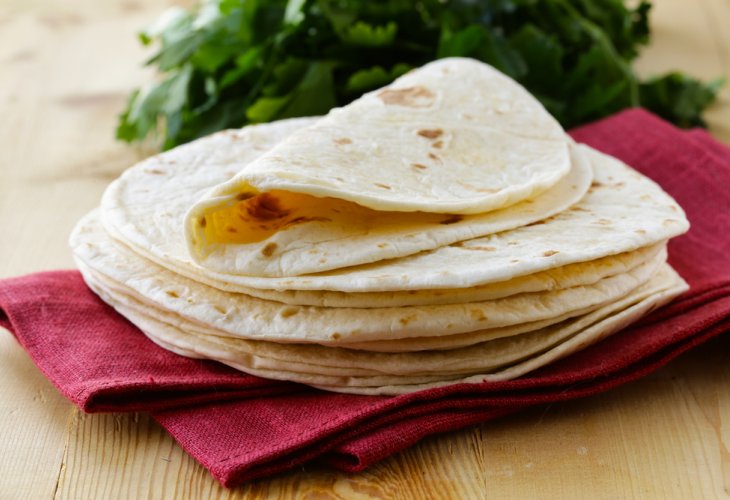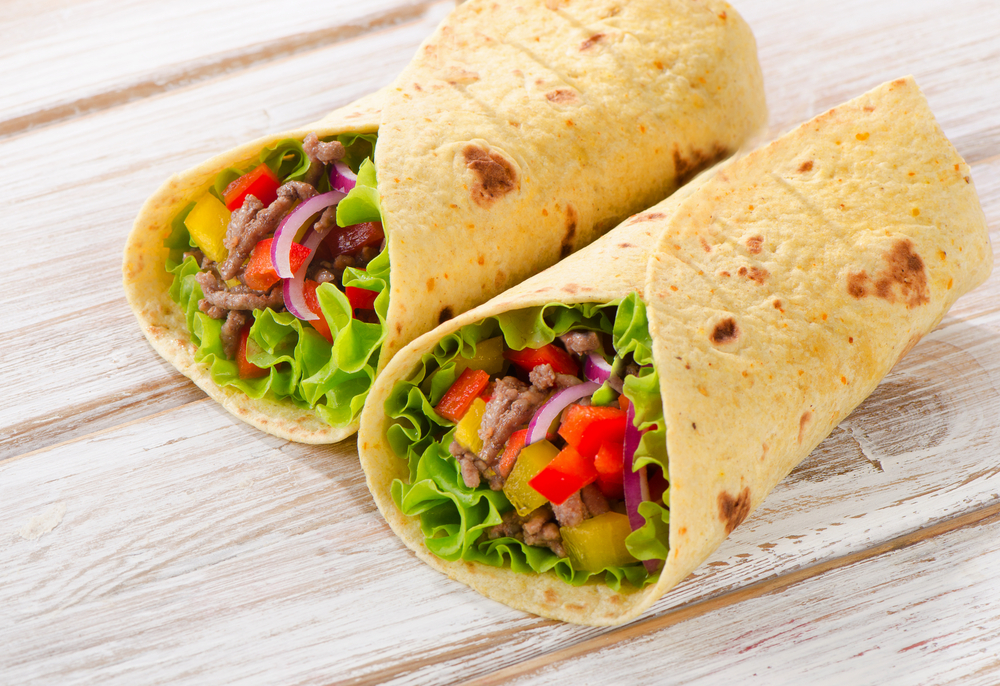The Tortilla Mystery: Bread or Mezonot? And Should We Separate Challah?
What is a tortilla made of, what blessing should we say over it, and how has it complicated kosher certification?
 (Photo: shutterstock)
(Photo: shutterstock)The tortilla is one of those foods that migrated to us from banquet halls, eventually becoming an honored guest on every supermarket shelf, across various companies and brands. Perhaps because tortillas originate from Mexico and Central America, for many of us, despite their versatility, they remain somewhat mysterious. What exactly do they contain, what blessing should we recite over them, and are they eaten like bread, like crackers, fried like muffleta, or baked like pastry leaves? But first, we need to examine how they are made and whether they're even kosher...
When early halachic authorities wanted to describe the tortilla, they wrote about bread found in distant islands made from various legumes. Indeed, the tortilla has always been the traditional bread of indigenous peoples, much like the teff bread of Ethiopians. This continued until the Spanish arrived in South America and noticed that the locals ate a round, thin food with a slightly yellow hue, reminiscent of Spanish tortilla omelets. They decided to adopt this food, and the first thing they did before making this indigenous bread their national dish was to name it "tortilla" – and since then... the original version of the tortilla has been forgotten.
Nixtamalization
There are two types of tortillas: one made from regular white flour, and the other from corn flour. The latter is the original tortilla. Interestingly, unlike wheat flour made from ground grains, corn flour must undergo a process called "nixtamalization" to make the dough flexible and flavorful. This is because if we take dry corn and grind it without additional processing, the flour would not be suitable for baking or eating.
Mexicans understood that corn needed to be processed and its husk removed, so they cooked the corn with shells or ash, and the more sophisticated even cooked it with lime water. Only after the corn was washed of its cooking liquid, while still moist, were the soft grains kneaded into a dough called 'masa,' which was then baked in a round, flat shape to form a tortilla.
Even today, corn flour intended for tortillas undergoes the nixtamalization process, but returns to flour form because the masa (dough from crushed grains) is dried and only then ground into flour. This flour is called "Masa Harina" or "Masa Flour". The shells and lime water that were once in the masa have now been replaced with sodium hydroxide (caustic soda), so there is no fundamental kashrut issue with corn flour, and it can be produced under mehadrin kosher certification; it may even be kosher for Passover.
Kosher Status of Tortillas
The main kosher concerns that may arise with tortillas relate to the identity of the baker. Bread made from corn is blessed with "shehakol," and therefore is not included in the category of pat akum (bread baked by non-Jews), but is rather considered a cooked dish. Therefore, according to Maran the Shulchan Aruch, it must be cooked entirely by a Jew, and it's not sufficient for a Jew to merely light the fire. Those familiar with tortilla production know it's somewhat complex. After kneading the dough, a machine turns the large dough into small balls; workers feed these balls into a machine with large presses that flatten the ball into a thin, pita-like shape. From there, the flattened shapes are automatically conveyed into a long oven that bakes the dough into tortillas. So in practice, the baking action is performed by the worker who inserts the dough into the pressing machine. Therefore, this worker needs to be Jewish.
 (Photo: shutterstock)
(Photo: shutterstock)In more sophisticated facilities, the machine that forms the dough balls also transfers them to the presses and then to the oven. But the problem still isn't solved, because even here, the worker who feeds the dough into the ball-forming machine needs to be Jewish. The only reasoning that might allow leniency for tortillas baked by non-Jews is based on the Rama's ruling that "bread made from legumes is not forbidden due to bishul akum (cooking by non-Jews) if it is not served at a king's table." However, nowadays, when an appetizer consisting of a filled tortilla costs a significant amount of money, it would be difficult to argue that this is not a respectable dish that wouldn't be served to important people.
Perhaps this is the place to note that with imported tortillas, the difference is quite noticeable between kosher supervision that follows Maran's ruling (requiring all cooking to be done by a Jew, with production emphasizing that all baking from beginning to end must be done only by a Jew) versus certification that relies on the Rama's ruling, where the supervisor is content with a Jew merely lighting the fire in the morning... In other words, tortillas require special certification for Sephardim who follow the Shulchan Aruch!
Wheat Flour Tortillas
Returning to types of tortillas, it's worth noting that the most common type is actually made from wheat flour. Here the process is even simpler; flour, water, oil, and a little salt are combined and kneaded until a thick, non-liquid dough forms. The dough is shaped into balls, flattened, and baked, resulting in a dough similar in texture and taste to pita bread, but baked thinner. Consequently, the prevailing opinion among poskim is that the tortilla is considered bread, meaning one should wash hands before eating it, recite the "Hamotzi" blessing over it, and afterward – Birkat Hamazon. Regarding the preparation process of wheat flour tortillas, the implication is that one can be lenient and allow even a non-Jew to bake the tortilla, provided that a Jew lights the oven.
Regarding the blessing, it's worth noting that some authorities believe the proper blessing for tortillas is 'borei minei mezonot,' because they are not considered to have "torita d'nahama" (the form of bread). However, in practice, it is currently accepted to recite the 'Hamotzi' blessing initially and Birkat Hamazon afterward.
In conclusion - even if the tortilla-making process reminds us of bread, with all its components - kosher supervision of flour sifting, separating challah from the dough, and more - we shouldn't rush to apply various laws related to bread, and certainly shouldn't assume this is pat akum permitted for consumption when Jewish bread is unavailable. Particular caution is needed for those living in places where tortillas serve as actual bread, since factories worldwide produce tortillas with margarine instead of oil, and the margarine may contain non-kosher ingredients or even be dairy...
Having resolved the halachic issues, it's worth mentioning that there are plenty of creative recipes for eating tortillas, whether as a convenient base for filling with meat, vegetables, cheese, or other spreads – like laffa, or as a filled dough for baking and frying like sambusak or puff pastry. Bon appétit!

